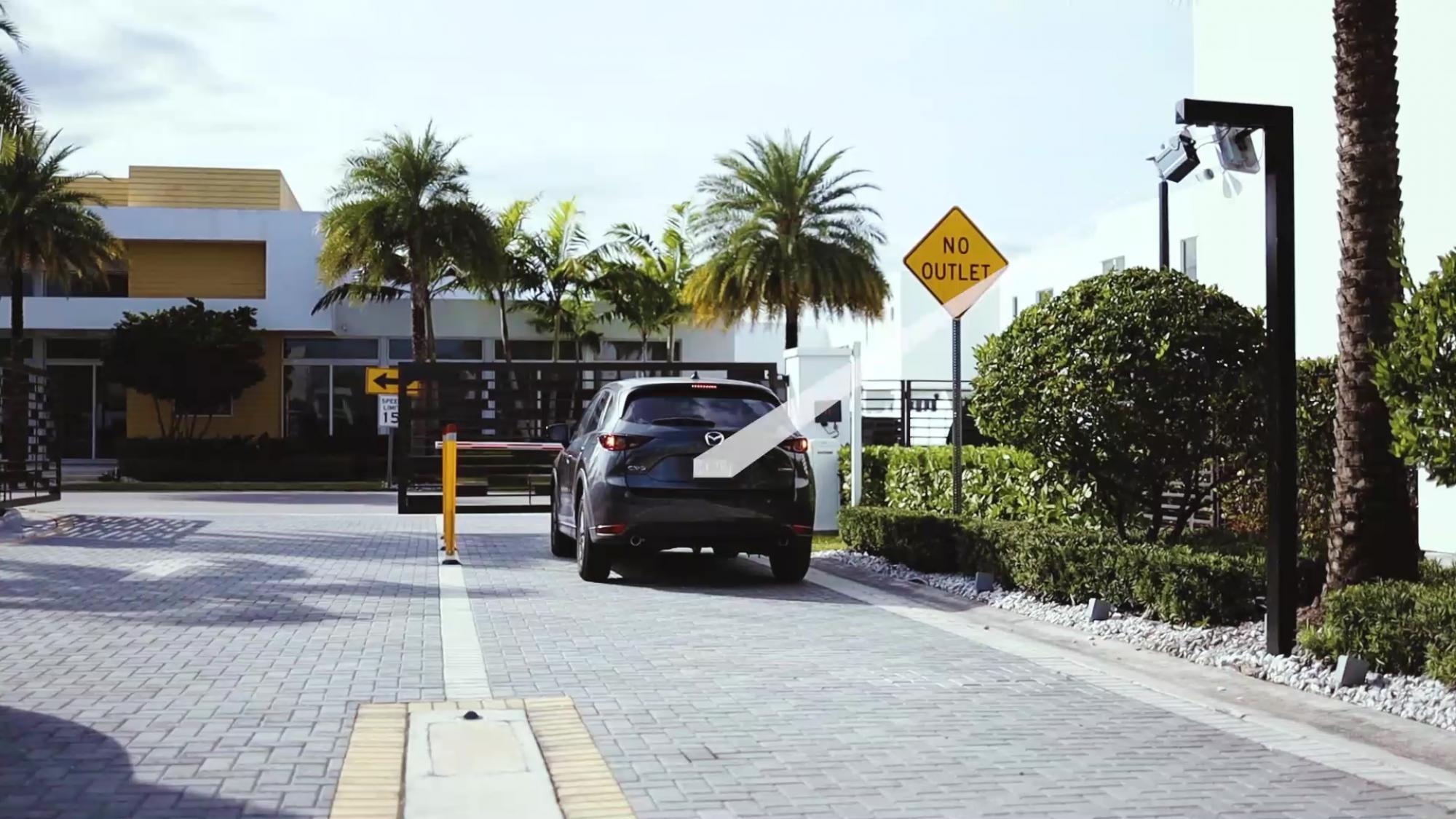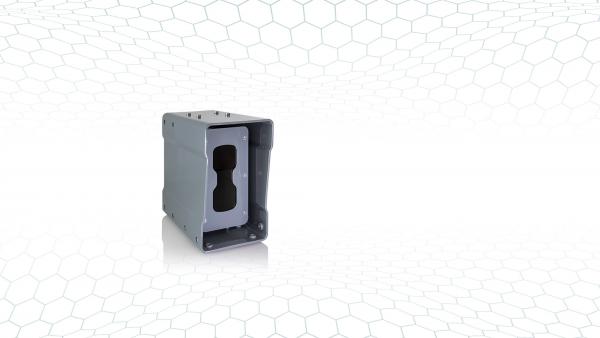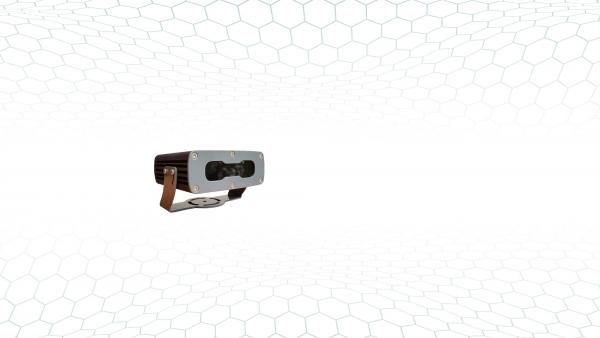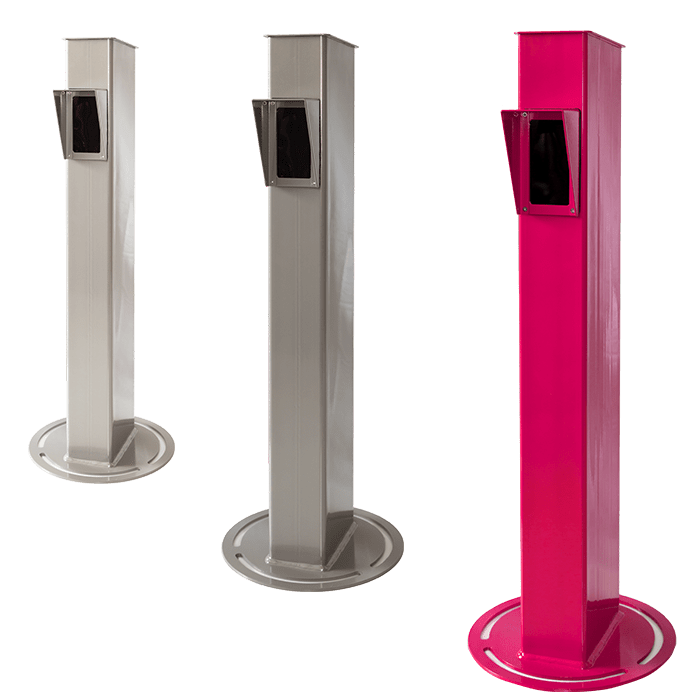



Vehicle access control refers to the practice of regulating and managing the entry of vehicles into specific areas, properties, or facilities. It involves using various technologies and methods to ensure that only authorized vehicles can enter certain spaces while preventing unauthorized vehicles from gaining entry.
Vehicle access control is commonly used in a variety of settings, including:
1. Barriers and Gates: Physical barriers such as gates, boom gates, and bollards are used to control vehicle entry. These barriers can be manually operated or automated, preventing unauthorized vehicles from driving through.
2. Access Cards and RFID: Access cards or RFID (Radio-Frequency Identification) tags are given to authorized vehicle owners. These devices are scanned at entry points to grant access to vehicles with matching credentials.
3. License Plate Recognition (LPR): Cameras equipped with LPR technology can read license plates and compare them against a database of authorized vehicles. Vehicles with valid plates are allowed access.
4. Biometric Systems: Some advanced vehicle access control systems use biometric data such as fingerprint, facial recognition, or iris scans to identify authorized drivers.
5. Mobile Apps: Mobile apps can be used to manage vehicle access. Authorized users can use their smartphones to open gates or barriers through Bluetooth or other wireless communication methods.
6. Visitor Management: For guests or visitors, temporary access credentials can be issued, allowing them to enter for a limited period.
7. Security Personnel: Human security personnel can manually verify credentials and control vehicle access.
8. CCTV and Surveillance: Closed-circuit television cameras can monitor entry and exit points, providing a visual record of vehicles and their occupants.
9. Integration with Access Control Systems: Vehicle access control systems can be integrated with broader access control systems that manage both vehicle and pedestrian entry.

Improved security: Vehicle access control can help prevent unauthorized vehicles from entering a restricted area, which can help to protect people and property.
Improved traffic flow: Vehicle access control can help to manage traffic flow by preventing congestion and ensuring that vehicles are only allowed to enter or exit at authorized times.
Increased efficiency: Vehicle access control can help improve efficiency by reducing the time it takes to enter or exit a restricted area.
Increased data collection: Vehicle access control systems can collect data about vehicle traffic patterns, which can be helpful for planning and decision-making.
Proximity card systems use proximity cards or fobs to identify authorized vehicles. When a card is presented to a reader, the system will grant access if the card is authorized.
License plate recognition systems use cameras to scan license plates and match them to a database of authorized vehicles. If the license plate is authorized, the system will grant access.
Biometric systems use biometric data, such as fingerprints or facial recognition, to identify authorized vehicles. When a vehicle's biometric data is matched to a database of authorized vehicles, the system will grant access.

Touchless access control: This technology uses sensors to detect the presence of an authorized vehicle without needing a card or fob. This can help to improve hygiene and reduce the spread of germs.
Biometric access control: This technology uses biometric data, such as fingerprints or facial recognition, to identify authorized vehicles. This can be more secure than traditional methods, such as proximity cards or license plate recognition.
Cloud-based access control: This technology allows access control systems to be managed remotely. This can make managing and updating systems easier and provide better security.
AI-powered access control: This technology uses artificial intelligence to improve the security and efficiency of access control systems. For example, AI can be used to identify unauthorized vehicles or detect suspicious activity patterns.
Integration with other security systems: Vehicle access control systems can be integrated with other security systems, such as video surveillance and intrusion detection systems. This can help to create a more holistic security solution.
License Plate Recognition (LPR or ANPR) brings a new world of enhanced monitoring and control capabilities for sites where vehicle access control is crucial, such as embassies, nuclear plants, military sites, prisons, and official buildings.

LPR-based Vehicle access control systems link vehicles to their owners, types, and other registered data; this helps operators decide who can enter or exit a restricted area, how to respond to incidents and provide smarter policies and better service: Custom access policies for different types of vehicles, identify vehicles that have been reported stolen, or send alerts when a vehicle enters or exits a restricted area.
A parking garage operator can use license plate data to create a custom access policy for vehicles with a specific parking permit. For example, the operator could allow vehicles with a permit to park in a particular area or enter the garage at certain times.
A security guard at a government building can use license plate data to identify vehicles that have been reported stolen. If the guard sees a stolen vehicle entering the building, they can take steps to stop it.
A business owner can use license plate data to send alerts when a vehicle enters or exits their property. This can help them to keep track of their deliveries and to identify vehicles that have been loitering on their property.

Companies, Government, and Residences are optimizing their vehicle access control methods using LPR/ANPR cameras to monitor vehicle license plates at entries and exits to achieve significant benefits:
Discover How Survision's LPR Cameras can add value to your Vehicle Access Control Solution

High performance LPR camera for the most challenging sites such as very short distances and open angles

More affordable, smaller yet very fast and precise LPR camera, ideal for barrier or totem embedding

The world's smallest LPR camera for security and on-street parking control

Ideal for ITS and Tolling, this powerful camera works at large distances and very high speeds

Compact and affordable LPR camera with 4G connection, designed for Smart city
Despite the country or region, even Vanity Plates!
Lights, protection and connection are integrated into the LPR Cameras
LPR is performed in the LPR cameras firmware
LPR can be triggered by external device or by the license plate itself
Neural networks are used to learn from every plate read and increase performance over time
Up to 155 mph (250 km/h)
The shortest distance (from 5ft!) at the highest accurate reading speed (20ms)
You do not need more than 1 Survision LPR camera to get LPR working
Software tools for system integration or app building


Satisfied or refunded!
We ensure a certain range of LPR reading rates that will satisfy your needs, burn it in a contract and then make it true; otherwise we will refund 100% of your payment.